Dismantling of an electro-pneumatic organ: Saint-Anne


June 2016
Previous page: the first find: a small organ with electropneumatic slider chests from Pels
What's next?
My warehouse is rather large, but my collection of cars is even larger. In particular for English cars it is rather unhealthy to store them outside in the weather. So I would like to allocate all floor space I have to park my cars, side by side. In the meantime, all cars are 140 cm high, while the warehouse is more than six metre. So I plan to make a floor in the hall on, say, 250 cm high. All organ divisions will then be placed on that floor level. Problem is that I cannot afford to build a floor like this on this moment. So I will store the organ parts in a large rack in the warehouse.
I also need some stops that are not with the Pels organ any more. I need a blower and a couple of wind reservoirs. In any case, an organ is useless to me if it does not have a swell box. And in fact, I would like at least the swell division to have some additional stops, like the Hautbois and the Voix Céleste.
So there is a reason to look further for organs and organ parts.
Swell engine and shutters, blower and console
On the Dutch eBay cousin Marktplaats, the parts of an electropneumatic organ were advertised. The Saint-Anne hospital, later Bernhoven, in Oss, 45 km east of where I live, has been demolished, but the chapel will be conserved and becomes part of the new health care centre. However, it will not have a religious function any more. The organ in the Saint-Anne Chapel, as I prefer to call it, was built by Vermeulen from Weert in 1963 in the chapel of the hospital built in 1960 by the Sisters of Love from Tilburg. It had 19 stops, including one extension, and contained some older pipework from 1840 and 1880. (Photo Piet Bron)
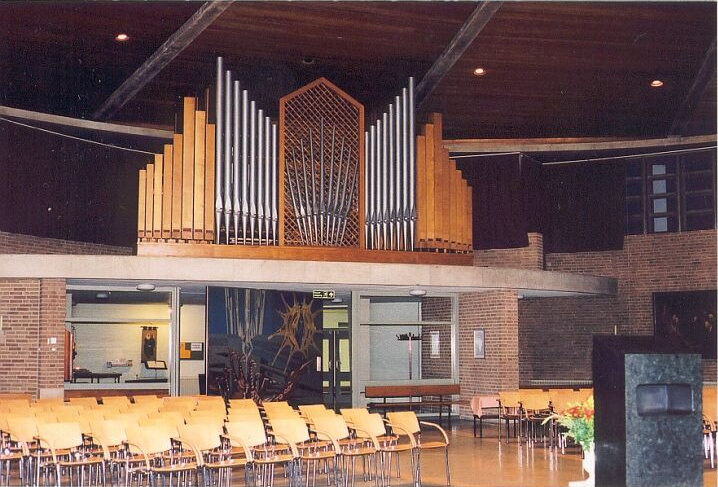
The chapel was dismantled and used as a workshop during building of the new health centre. I like this sixties style of this eccentric-circular building and hope very much that the redwood (?) ceiling is conserved and not painted white!!! (painting everything white started around 1982 and this awful disease is still not over … I always say: "you never get that right again", people react with "right?" and then I explain that I mean removing all the paint from the bare wood).

The only work of art still present in the building is on the main door. It is a mosaic made of pieces of linoleum.
[28 December 2016 I found out that this monumental piece of art was made bij Jan Dijker. I informed his daughter (?) Sylvie Dijker. She was very delighted, as she supposed the work has been demolished with the hospital, as many of his other works. She used my (phone) photo to document it on the website. See website Foundation Jan Dijker (1913 – 1993).]

The idea was to keep the organ prospect, but to remove all organ parts that could be of use to others. In fact, the organ would be reduced to a façade. The organ was donated to the parish of Oss. Two stops were used for the organ of Saint-Joseph and the rest was offered for sale.
I could not or did not want to buy the pipework. The windchests needed to stay because of the structure of the case and would in any case be too bulky and heavy for me to remove. However, I got the swell shutters, the electropneumatic swell engine, the blower and three typical reservoirs.
My dear brother helps with dismantling the swell box and shutters. We had to wear hard hats because it was a building site.
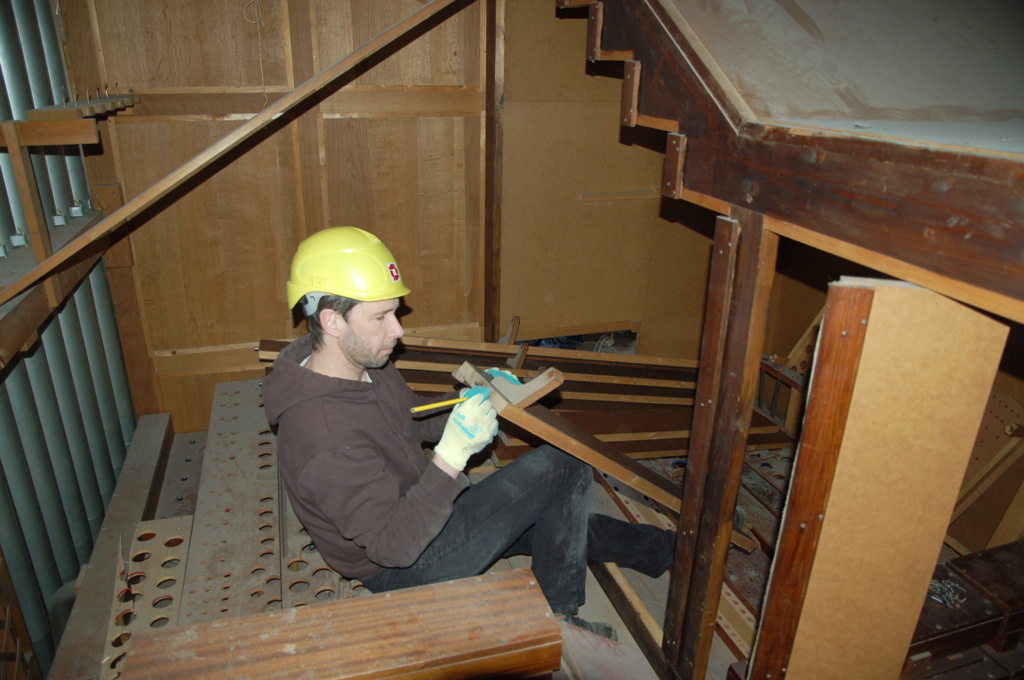
By moving the case panels (? yes!), we succeeded in getting the blower out. ½ horsepower, 70 kg, me and the swell engine in front.

It is not high. But not easy on a rope. You also see the organ prospect, which then had to be saved.
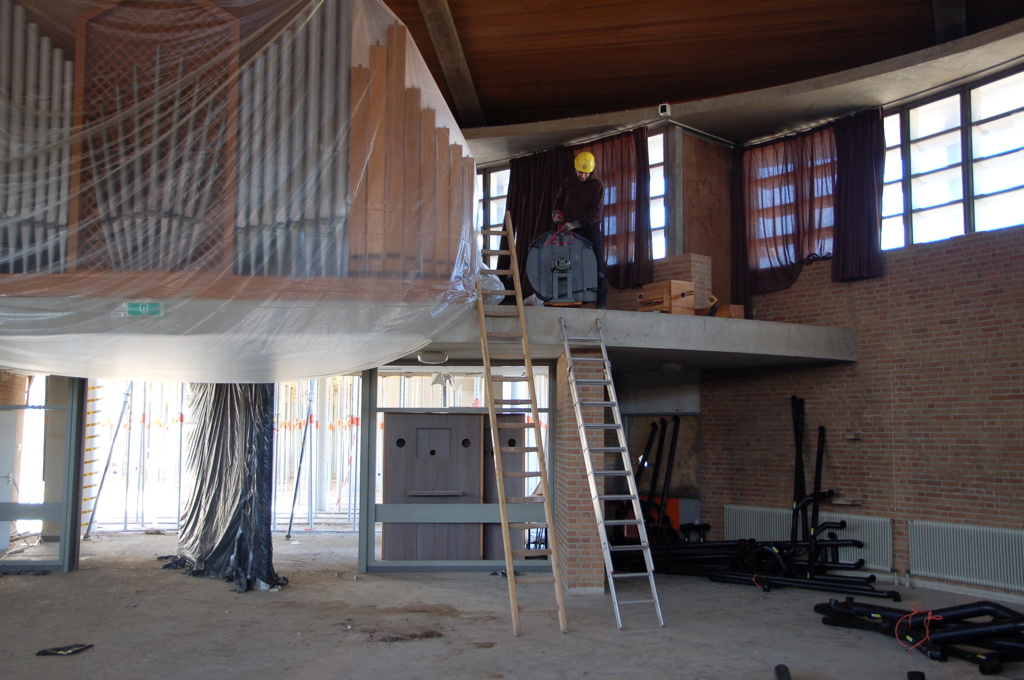
Yes, my brother is nice and funny, but also note the building.

A few months later, I also got the console, just to … well …
Removal of the organ remainders
Rather unexpectedly, a year later I was asked if I would be interested in the remainders. The health centre had changed plans and the organ façade and all remainders should now be removed. The prospect wasn't of interest to me and the Subbass was already sold. I could think of some parts still of interest, but in particular the removal of the heavy cone chests would be a challenge. However, in the meantime I had removed other windchests and had a couple of friends of whom I already knew about their muscle power.
It was told in fact that the rest of the remainders were damaged and utterly useless, but I was not convinced and got some photos that proved me to be right. When I finally was allowed access to the chapel to inspect what remained, you would probably say that the organ already was destroyed … but …
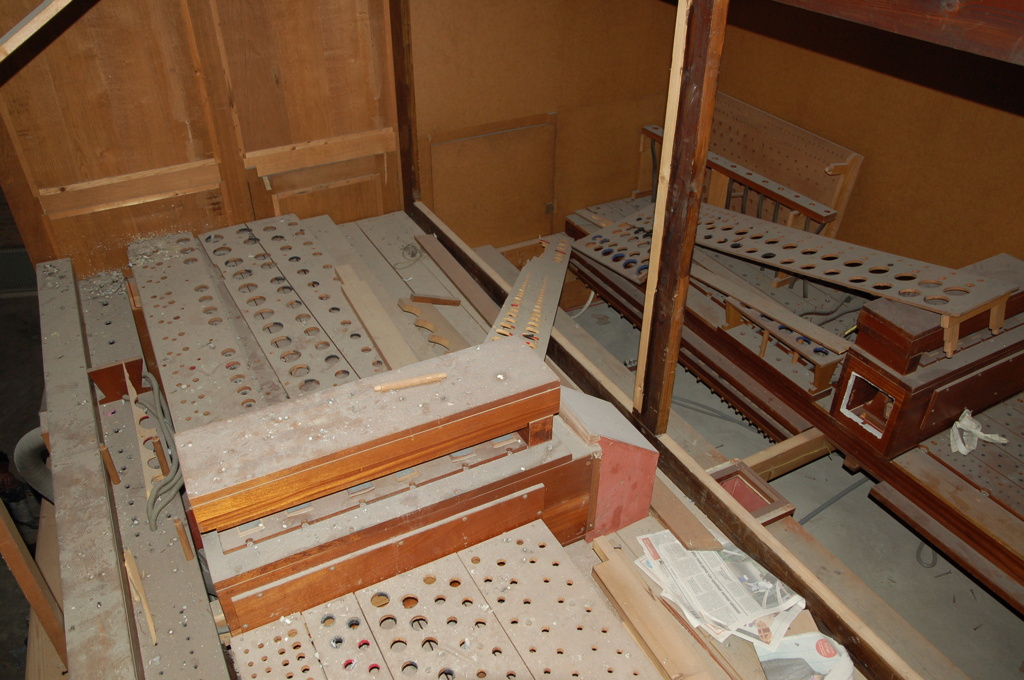
… but I have an optimistic nature and knew what to expect from what is underneath, even with some rain water and pigeon damage. In particular, I was after the windchests, althought it was already robbed of its magnets, and the massive oak panels of the case. I managed to dismantle them and get them to the floor without breaking them.

Here the windchest of the Great organ and its stop action can be seen in front. We also see the swell box with the shutters my brother and me removed in the previous session. Inside the swell we see the remainders of the pipe racks on the windchest. To the right is a panel of the massive oak case.

Some of the windchests had a double pneumatic action, apparently because the first stage was not powerfull enough. The electric part of the action, the electromagnets, were already removed by someone else. I will need to find some. During the dismantling and before, some of the cone shafts were bent or broken, so the chests will have to come apart sooner or later … I can also adapt the dimensions to the new situation.
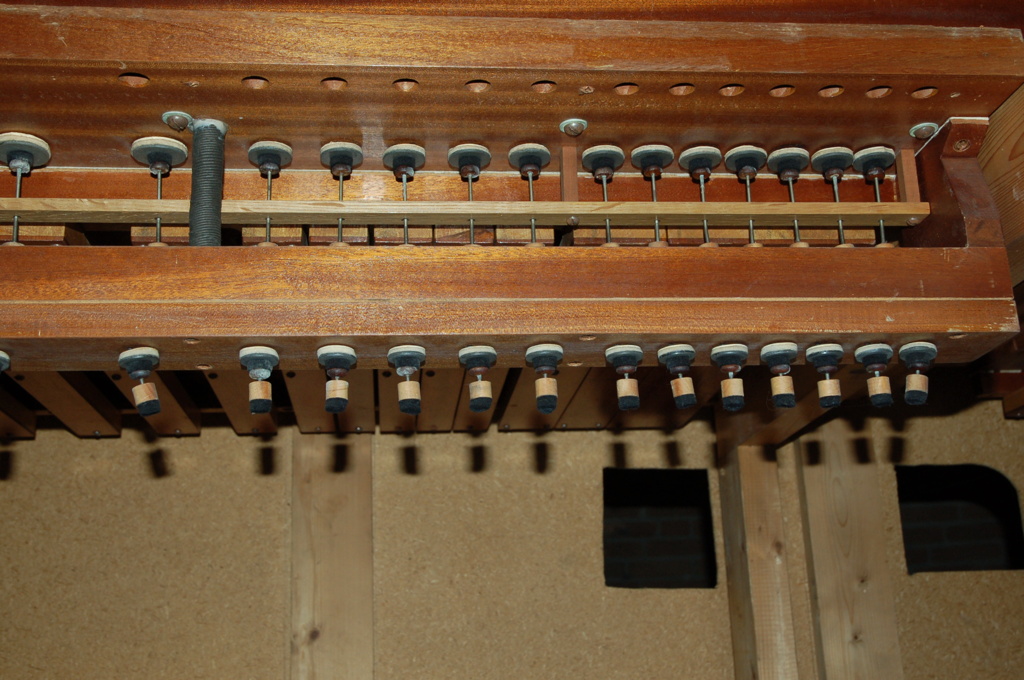
I dismantled all remaining electrics, a wind channel, the prospect windchest, other direct windchests for Prestant 8' and Subbas 16' and the rest. Two friends from Laurentius here in Dongen helped me with the large and heavy parts.

As we were concentrated on the tough job to get both windchests from their frames and to the ground, I do not have photos of it. We used a lift present for the painters, but then still it was quite a challenge … But in the end … here is one of the 140 kg fat men in the warehouse. Shiny mahogany, yes, great, but with al the cones in it (it is a cone chest) also very heavy! Mind you, we removed the toe boards.
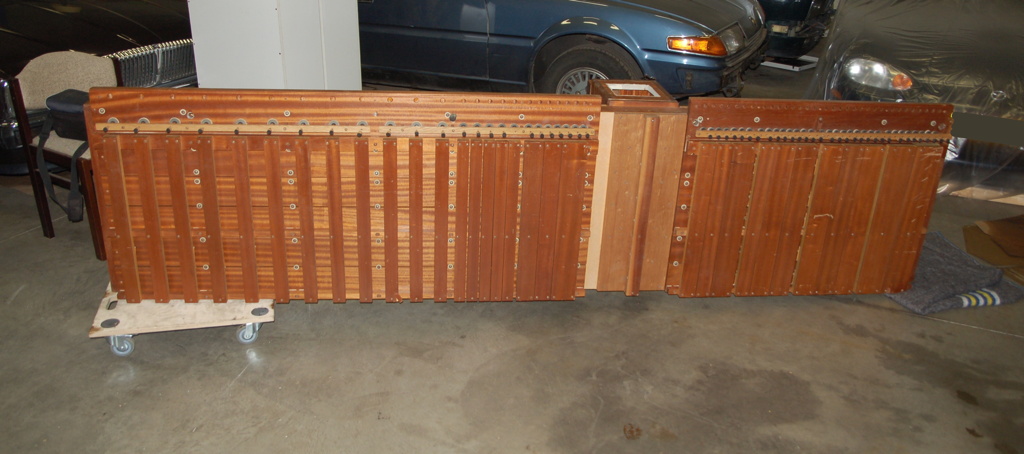
.
Next page: abundantly illustrated: the dismantling of an electropneumatic organ from Verschueren
Overview: an organ for my own
Kind regards,
Rens Swart